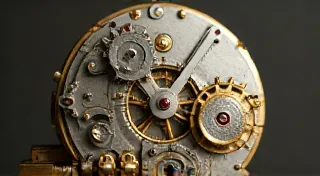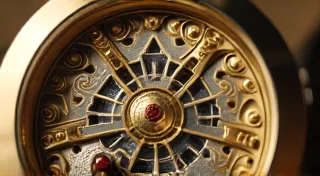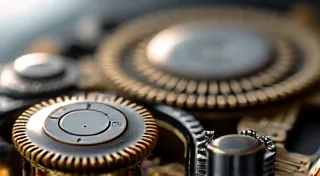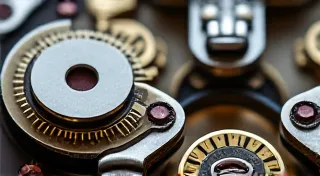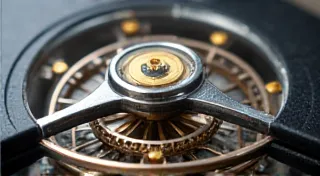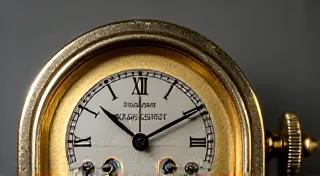Understanding Watch Movement Serial Numbers: What They Reveal
For those deeply involved in watch repair, collecting, or simply appreciating the intricacies of mechanical timepieces, understanding the significance of watch movement serial numbers is crucial. These seemingly random strings of digits are more than just identifiers; they’re windows into a movement's history, providing clues about its manufacturing date, origin, and even its intended market. This guide explores the world of watch movement serial numbers, delving into the common systems used by major manufacturers and highlighting what information they typically reveal. Whether you're a seasoned watchmaker or a curious enthusiast, decoding these numbers can enrich your appreciation for the artistry and engineering within a mechanical watch.
The Purpose of Serial Numbers
Before we dive into the specifics, it’s important to understand why watch manufacturers assign serial numbers to their movements. Initially, they served a basic tracking purpose - allowing the factory to trace a movement's production run, identify potential issues, and manage inventory. As the industry matured, these numbers evolved to contain more coded information, providing valuable insights for repair shops, historians, and collectors. Understanding how these movements function is also key, and a comparison of automatic vs. manual-wind movements can be a useful starting point for anyone wanting to understand more about the technology.
Today, serial numbers can help identify:
- Manufacturing Date: The most common information gleaned.
- Origin: The factory where the movement was produced.
- Caliber Variations: Distinguishing between different versions of the same movement.
- Intended Market: Knowing if the movement was intended for retail sale or for use in a specific brand's watch.
- Quality Grade: While less common, some manufacturers encoded quality grades into the serial number.
- Movement Functionality: A deeper understanding of how the movement operates, as many variations exist.
Decoding Serial Number Systems: Major Manufacturers
Different watch movement manufacturers employ different serial numbering systems. Let's examine some of the most significant, along with how to interpret their codes.
Rolex
Rolex serial numbers are among the most widely recognized and sought-after by collectors. They offer a relatively precise manufacturing date. The system has evolved over time, but the core principles remain similar.
Current System (approx. 1987 - Present): Rolex serial numbers typically consist of six to eight digits. The first three or four digits correlate to the year of manufacture. Online Rolex serial number charts (widely available through watch enthusiast forums and websites) provide a lookup table. Subsequent digits often relate to the production sequence within that year or represent variations within the production line.
Early System (Pre-1987): Prior to 1987, Rolex used a shorter sequence of numbers that was more difficult to translate into a precise manufacturing date. This system is generally more reliant on examining other movement markings and case characteristics.
Important Note: Rolex serial numbers are often duplicated across multiple years. This is intentional, as Rolex recycles numbers periodically. The best way to pinpoint the manufacturing date is to cross-reference the serial number with the movement’s other markings and the overall condition of the watch. The specifics of different Rolex calibers, like the Rolex movement identification process, also informs the dating and identification process.
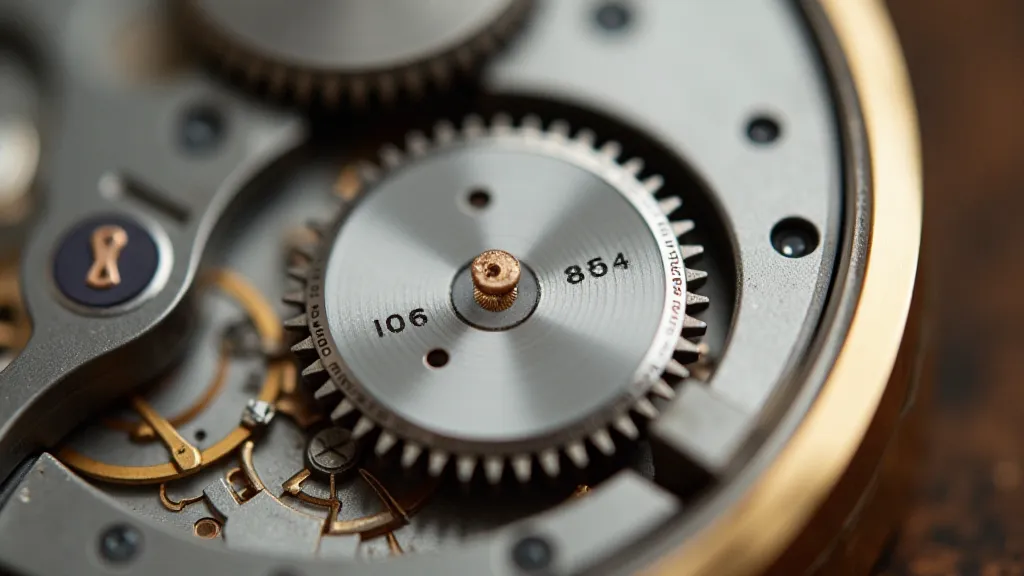
ETA (Swiss Made)
ETA is a subsidiary of the Swatch Group and is one of the world's largest suppliers of movements to other watch brands. ETA movements are incredibly common, appearing in a vast range of timepieces. Their serial numbering system can be more complex than Rolex’s, but still provides valuable information.
General Structure: ETA serial numbers usually begin with a series of letters representing the movement caliber (e.g., 2824, 2836). Following the letters are numbers that, when cross-referenced with ETA's serial number charts, can reveal the approximate manufacturing year. Later digits might indicate the factory of origin (e.g., Grenchen, Marin) and the production sequence.
Variations: ETA's movements are widely distributed, and different brands often modify or rebrand them. The appearance of the serial number can vary slightly depending on the re-branding.
Valjoux
Valjoux, now part of the Swatch Group, is another significant manufacturer of mechanical movements, particularly known for their chronograph movements. Their serial numbering system is similar to ETA's in that it incorporates both letters (representing the caliber) and numbers indicating the manufacturing date and other information.
Typical Format: A Valjoux movement serial number usually starts with the caliber designation (e.g., 7750, 733). Subsequent numbers correlate to the year of manufacture and production location. Online resources dedicated to Valjoux movements provide detailed interpretation guides.
Omega
Omega, a prestigious Swiss watch brand, also utilizes serial numbers to track its movements. Like Rolex, Omega’s serial numbers are highly valued by collectors.
Serial Number Structure: Omega movements often have a five or six-digit serial number. Online resources and Omega enthusiast communities provide tools and information to estimate the manufacturing year based on the serial number. However, Omega has occasionally reused serial numbers, so other factors should be considered for a more accurate dating.
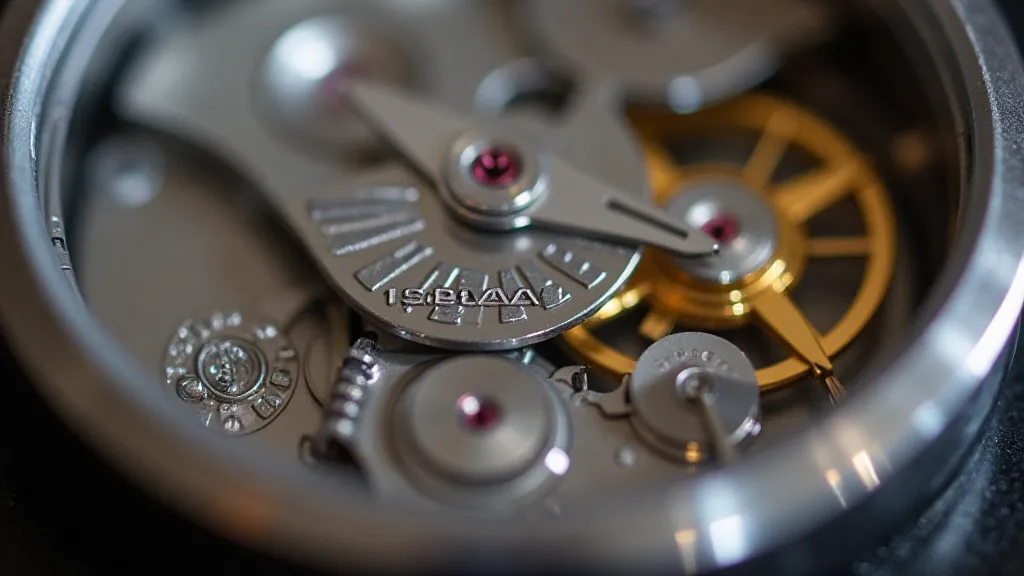
Challenges and Considerations
While serial numbers are invaluable, interpreting them isn’t always straightforward. Several challenges can arise:
- Recycling of Numbers: As mentioned, many manufacturers periodically reuse serial numbers. This makes pinpointing the exact year of manufacture difficult.
- Movement Swapping: In vintage watches, movements are sometimes replaced during service or repair. This can lead to a mismatch between the movement's serial number and the watch's case.
- Counterfeit Movements: Unfortunately, counterfeit watch movements exist. These often have fake serial numbers intended to deceive buyers.
- Data Availability: While extensive online resources are available, they don't cover every movement and manufacturer. Some serial number charts may be incomplete or inaccurate.
- Movement Modifications: Custom modifications or servicing can sometimes obscure or alter the original serial number.
- Complexity of Calibers: Each caliber has its own intricacies, and a deeper look at the silent language of bridges is important for overall diagnosis and appreciation.
Resources for Decoding Serial Numbers
Several online resources and communities can assist in deciphering watch movement serial numbers:
- Watch-related forums: Many watch enthusiast forums have dedicated sections for movement identification and serial number decoding.
- Manufacturer websites: Some manufacturers provide limited information about their serial numbering systems on their websites.
- Online databases: Several websites compile serial number charts for various manufacturers. (Care should be taken to use reputable sources.)
- Watch repair shops and watchmakers: Experienced watchmakers can often provide valuable insights based on their knowledge and experience.
- Sellita Movement Information: For a broader understanding of movement manufacture, you can refer to Sellita watch movements identification guides.

Conclusion
Understanding watch movement serial numbers is a fascinating and rewarding aspect of the world of mechanical watches. While interpreting these codes can be challenging, the insights they provide about a movement's history and origin are invaluable to collectors, repairers, and enthusiasts alike. By combining careful observation, research, and utilizing available resources, you can unlock a deeper appreciation for the artistry and engineering within a mechanical watch. A strong foundation in the fundamentals of watchmaking, including appreciating the silent language of bridges, will significantly enhance your ability to understand and diagnose movement-related issues.
